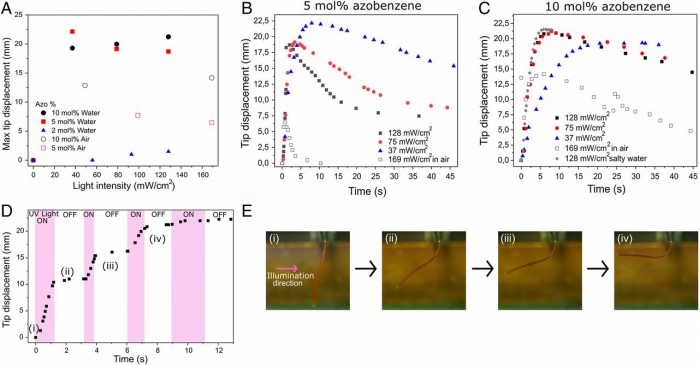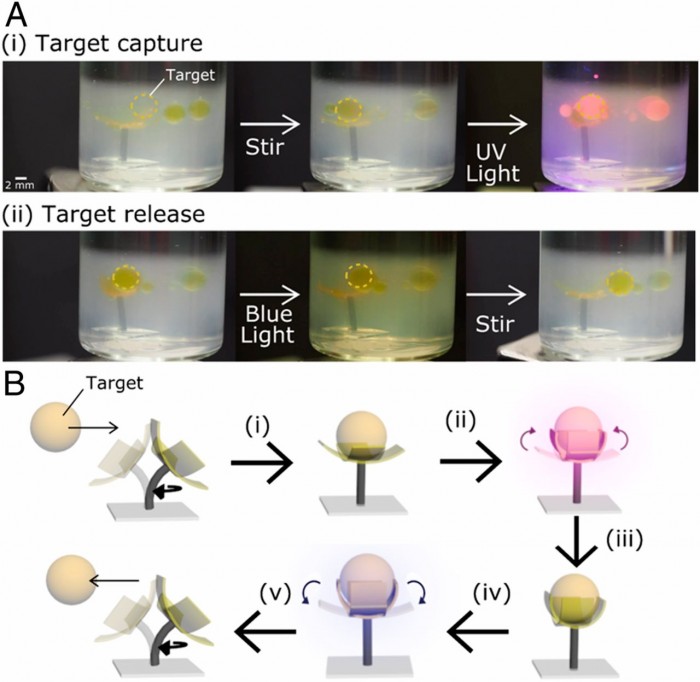Fan Cheng Inspired by corals, scientists have developed a new type of water garbage cleaning rob
Published on:2020-07-16
According to foreign media reports, researchers at Eindhoven University of technology in the Netherlands, inspired by marine microbial corals, have developed a centimeter robot driven by magnets and light. Because of its ability to grab and release objects underwater, the team envisioned a range of applications for its new machine, including collecting pollutants with tentacles and even capturing cells as biomedical tools.

This wireless aquatic robot is inspired by corals, small and soft organisms that unite in huge numbers to form coral reefs. The characteristic of these small animals is that the central stem will do specific movement and generate small current, which will attract food particles and let their tentacles grasp them. At this point, the researchers saw some interesting possibilities.
"My inspiration comes from the movement of these corals, especially their ability to interact with the environment through self-made electricity," explained study author Marina Pilz da Cunha. Pilz da Cunha and her team recreated this by starting with a stem that moves under the influence of a rotating magnet below, enabling it to generate an electric current in the surrounding water. This has the effect of attracting pollutant particles in the water, which is taken over by light activated tentacles.

These tentacles are made of photomechanical polymer materials and can respond to different wavelengths of light. When exposed to ultraviolet light, the tentacles will "grasp" and blue light will "release" them. In general, this forms a soft robot one centimeter long, which can grasp small underwater objects through magnets and light.
"Combining two different stimuli is rare because it requires exquisite material preparation and assembly, but it is interesting to create an unbound robot because it allows complex shape changes and tasks," Pilz da Cunha explained.

In one experiment, the team demonstrated the ability of its coral inspired robot by asking the robot to capture oil droplets from water samples. As an additional layer of function, it can also keep the robot in a new shape, such as "grasping" state, until it is exposed to the correct light. "This helps control the grab arm; once something is grabbed, the robot can keep it until it is stimulated by light again." Pilz da Cunha said.

For the next step, the team is trying to produce a team of its small robots, which may work together to transport particles, and one robot will pass them to the next robot. Later, the team envisioned using them to capture and transport specific cells as part of advanced diagnostic equipment. The relevant research results have been published in the journal Proceedings of the National Academy of Sciences.

This wireless aquatic robot is inspired by corals, small and soft organisms that unite in huge numbers to form coral reefs. The characteristic of these small animals is that the central stem will do specific movement and generate small current, which will attract food particles and let their tentacles grasp them. At this point, the researchers saw some interesting possibilities.
"My inspiration comes from the movement of these corals, especially their ability to interact with the environment through self-made electricity," explained study author Marina Pilz da Cunha. Pilz da Cunha and her team recreated this by starting with a stem that moves under the influence of a rotating magnet below, enabling it to generate an electric current in the surrounding water. This has the effect of attracting pollutant particles in the water, which is taken over by light activated tentacles.

These tentacles are made of photomechanical polymer materials and can respond to different wavelengths of light. When exposed to ultraviolet light, the tentacles will "grasp" and blue light will "release" them. In general, this forms a soft robot one centimeter long, which can grasp small underwater objects through magnets and light.
"Combining two different stimuli is rare because it requires exquisite material preparation and assembly, but it is interesting to create an unbound robot because it allows complex shape changes and tasks," Pilz da Cunha explained.

In one experiment, the team demonstrated the ability of its coral inspired robot by asking the robot to capture oil droplets from water samples. As an additional layer of function, it can also keep the robot in a new shape, such as "grasping" state, until it is exposed to the correct light. "This helps control the grab arm; once something is grabbed, the robot can keep it until it is stimulated by light again." Pilz da Cunha said.

For the next step, the team is trying to produce a team of its small robots, which may work together to transport particles, and one robot will pass them to the next robot. Later, the team envisioned using them to capture and transport specific cells as part of advanced diagnostic equipment. The relevant research results have been published in the journal Proceedings of the National Academy of Sciences.

